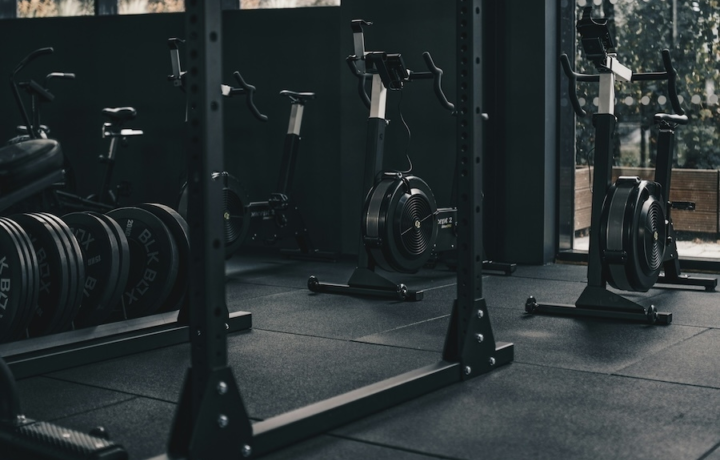Exercise
Cable Front Raise

Cable Front Raise
How to Perform
- Stand in front of a cable machine with a straight bar attachment set at the lowest position, feet shoulder-width apart, and grab the bar with an overhand grip.
- Position yourself with a slight bend in your knees, core engaged, chest up, and shoulders pulled back and down.
- Hold the cable bar with arms fully extended down in front of your thighs, maintaining a slight bend at the elbows throughout the movement.
- Exhale as you raise the bar in front of you with straight arms until your hands reach shoulder height, keeping your wrists neutral.
- Pause briefly at the top position while maintaining tension in your shoulders and keeping your core tight to prevent arching your lower back.
- Inhale as you slowly lower the bar back to the starting position with control, resisting the pull of the cable.
- Maintain a stable torso throughout the entire movement, avoiding the tendency to swing or use momentum.
- Keep your shoulders down away from your ears during both the raising and lowering phases to properly isolate the front deltoids.
Important information
- Keep your wrists firm and neutral throughout the exercise to prevent strain.
- If you feel your lower back arching, reduce the weight and focus on engaging your core more intensely.
- Make sure your elbows maintain a slight bend to reduce stress on the elbow joint while keeping tension on the shoulders.
- Control the descent rather than letting the weight drop, as the eccentric (lowering) phase is crucial for muscle development.

Cable Front Raise
Exercise Details
Primary Muscles
Muscle Groups
Mechanic
Built for progress
Take the guesswork out of training
Create personalized AI-powered workout plans that evolve with you. Train smarter, track every rep and keep moving forward, one workout at a time.






The Cable Front Raise stands as a stellar isolation movement targeting the anterior deltoids, offering bodybuilders and strength enthusiasts alike a powerful tool for sculpting impressive front shoulder development. This intermediate-level exercise delivers remarkable muscle activation through constant tension, setting it apart from traditional dumbbell variations where resistance fluctuates throughout the movement pattern.
When incorporated strategically into your training regimen, the Cable Front Raise can effectively bridge the gap between basic and advanced shoulder development, particularly beneficial for those seeking balanced deltoid aesthetics or addressing front delt weaknesses. The cable mechanism creates a unique resistance profile that many bodybuilders find superior for achieving that coveted shoulder cap definition and separation.
Strength athletes equally benefit from this movement as it reinforces shoulder stability and power needed for pressing movements. By strengthening the anterior deltoid complex through isolated work, lifters often report improvements in their bench press, overhead press, and other compound pushing exercises. The controlled nature of the cable system also provides an element of safety while still allowing for progressive overload principles to be applied effectively.
From a bodybuilding perspective, the Cable Front Raise delivers exceptional muscle fiber recruitment when performed with proper form and appropriate weight selection. The exercise creates remarkable time under tension—a crucial factor for hypertrophy—allowing intermediate lifters to stimulate growth through focused effort rather than excessive loading. This makes it particularly valuable during specialization phases or when implementing pre-exhaust techniques in shoulder-focused training sessions.
Whether your goal centers on competitive bodybuilding aesthetics or functional strength development, the Cable Front Raise deserves consideration in your shoulder training arsenal. Its versatility allows for integration into various program structures, from high-volume hypertrophy work to more moderate rep schemes focused on strength-endurance of the anterior deltoids. When programmed intelligently alongside pressing movements and lateral raises, it contributes significantly to comprehensive shoulder development that balances both form and function.
FAQ - Cable Front Raise
The Cable Front Raise primarily targets the anterior (front) deltoids while also engaging the upper chest, trapezius, and serratus anterior as secondary muscles. The constant tension from the cable mechanism ensures superior muscle fiber recruitment compared to free weight variations.
Stand facing away from the cable machine with feet shoulder-width apart, grab the handle with an overhand grip, and raise your straight arm forward until it reaches shoulder height while maintaining a slight elbow bend. Control the weight during the lowering phase, keeping your core tight and avoiding momentum throughout the movement.
Select a weight that allows you to perform 10-15 controlled repetitions with proper form—typically lighter than what you'd use for compound shoulder exercises. The focus should be on feeling the anterior deltoid working through a full range of motion rather than moving heavy weight with compromised technique.
Include Cable Front Raises 1-2 times weekly as part of your shoulder training, typically performing 3-4 sets. Place them after your compound pressing movements when your shoulders are pre-fatigued but not exhausted, and avoid training front raises the day before heavy bench press sessions.
Avoid swinging your body to generate momentum, raising the weight above shoulder height, shrugging your shoulders during the movement, and using excessive weight that compromises form. Also, ensure you're not overtraining your front delts if you're already doing significant pressing work in your program.






